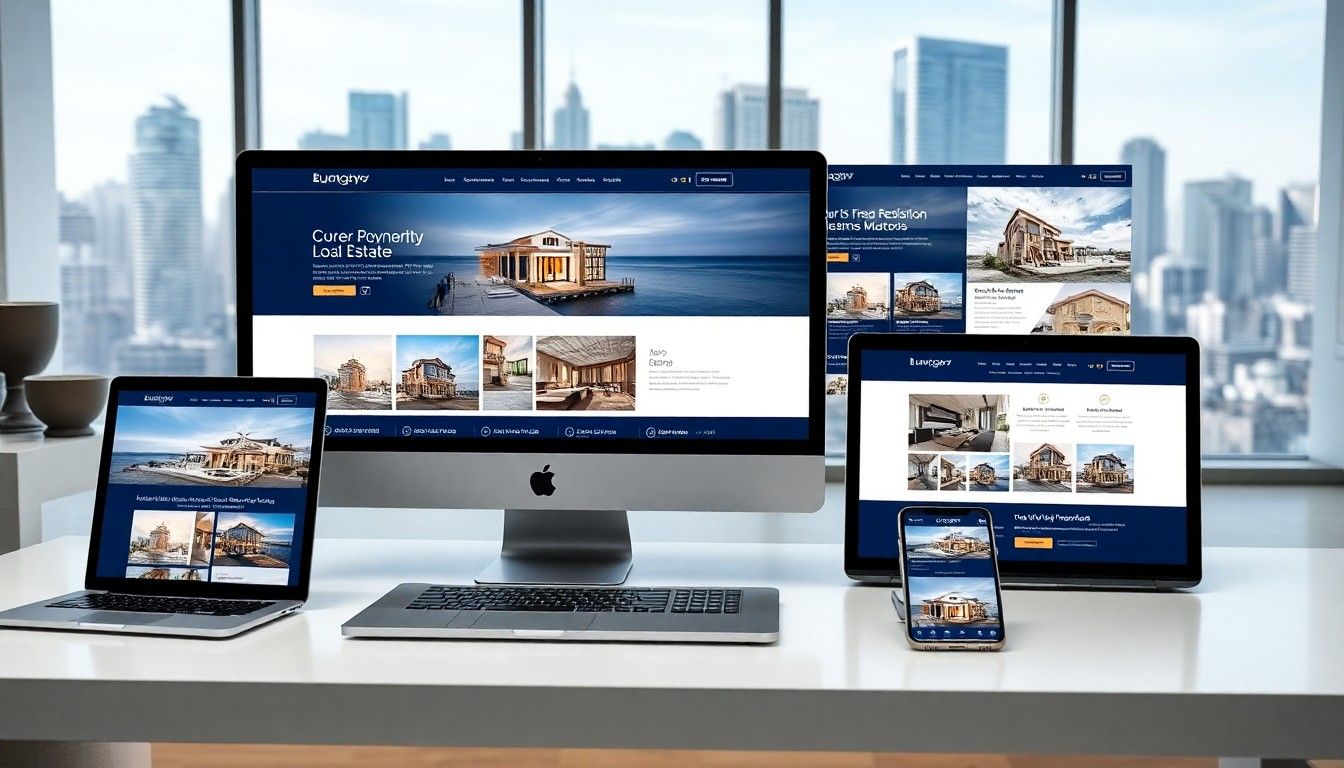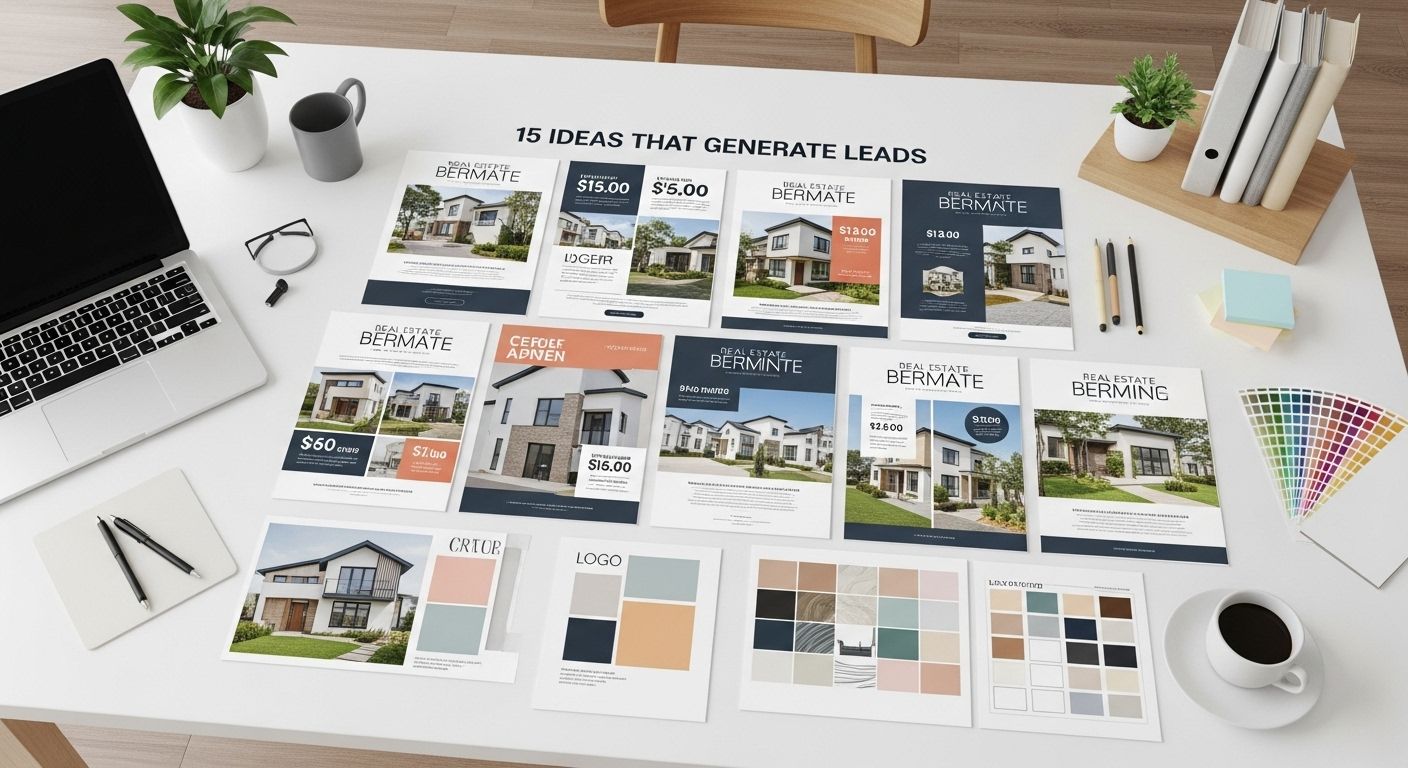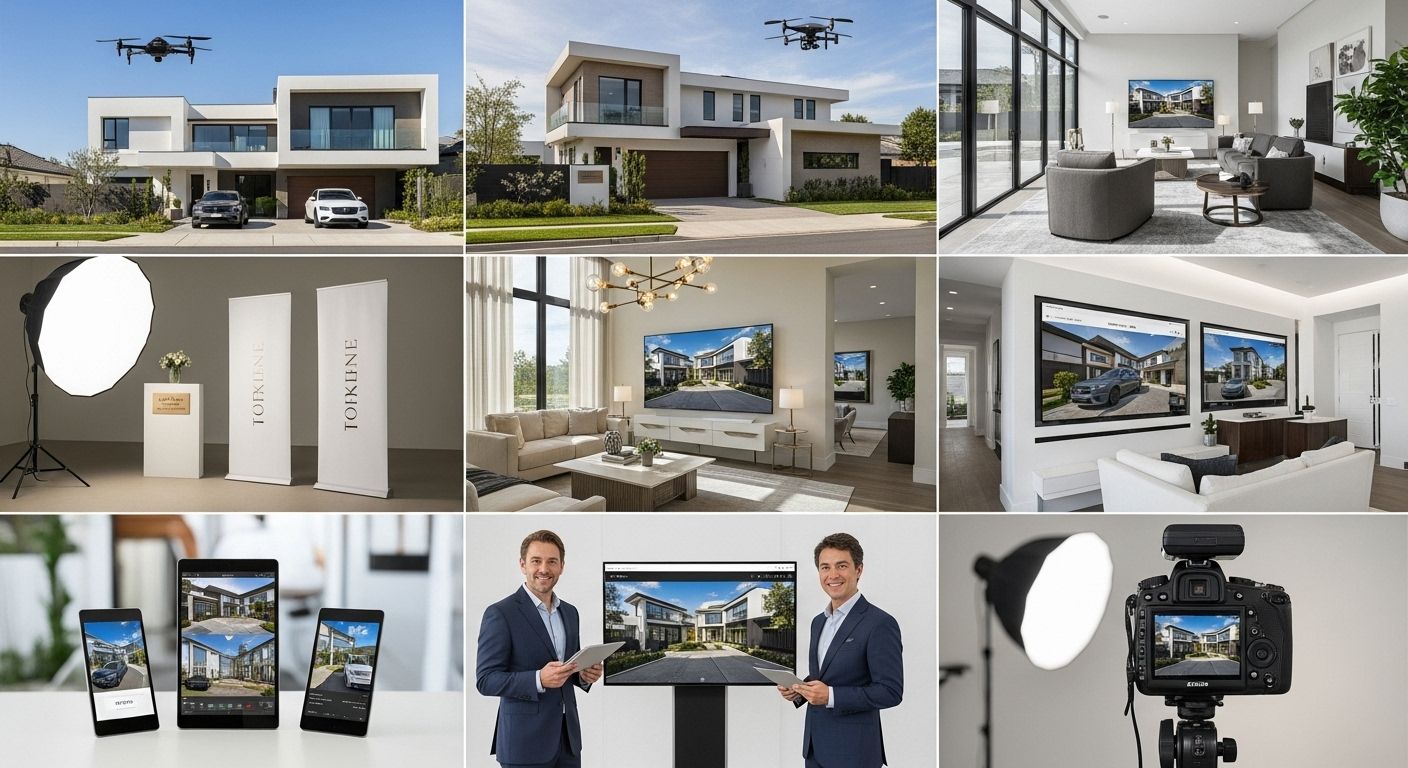Real Estate Web Page Design: Convert Visitors Into Leads
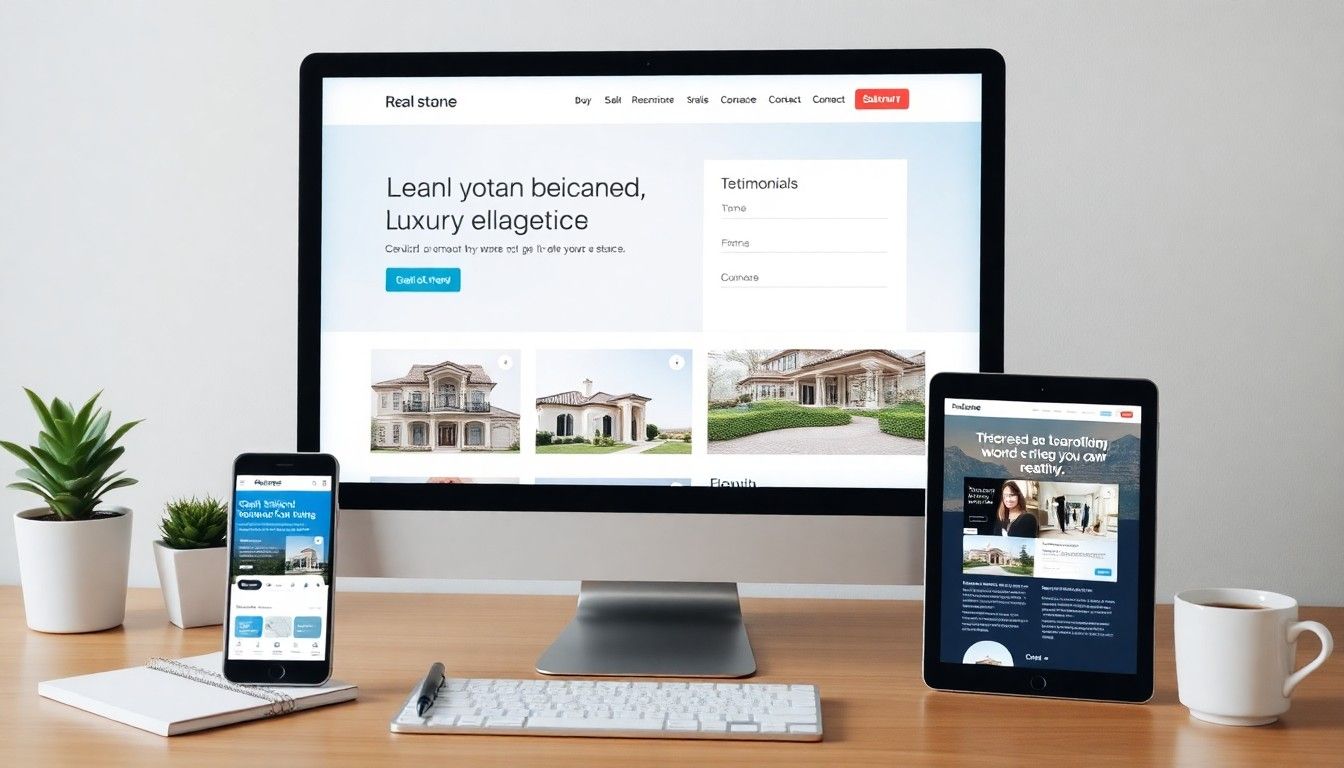
Your real estate website isn't just a digital business card. It's your 24/7 lead generation machine.
The difference between a website that collects dust and one that delivers qualified leads? Design that converts. We're talking about strategic layout choices, smart visual content, and user flows that guide visitors toward becoming clients.
Most real estate professionals treat their website like an afterthought. They grab a generic template, throw up some listings, and wonder why their phone isn't ringing. But here's what actually happens: 75% of users judge a website's credibility based on its visual appearance, including clean layouts, consistent branding, and professional imagery.
75% of users judge a site's credibility by its visuals—clean layouts and professional imagery signal trust.
You're competing against every other agent in your market. Your website needs to work harder than theirs.
We'll walk through the essential design elements that transform casual browsers into serious buyer and seller leads. From choosing between custom design and template solutions to implementing lead capture systems that actually work, you'll understand exactly what your real estate web page needs to generate business.
By the end, you'll know which features matter most, how to showcase properties effectively, and what technical components drive both conversions and search visibility.
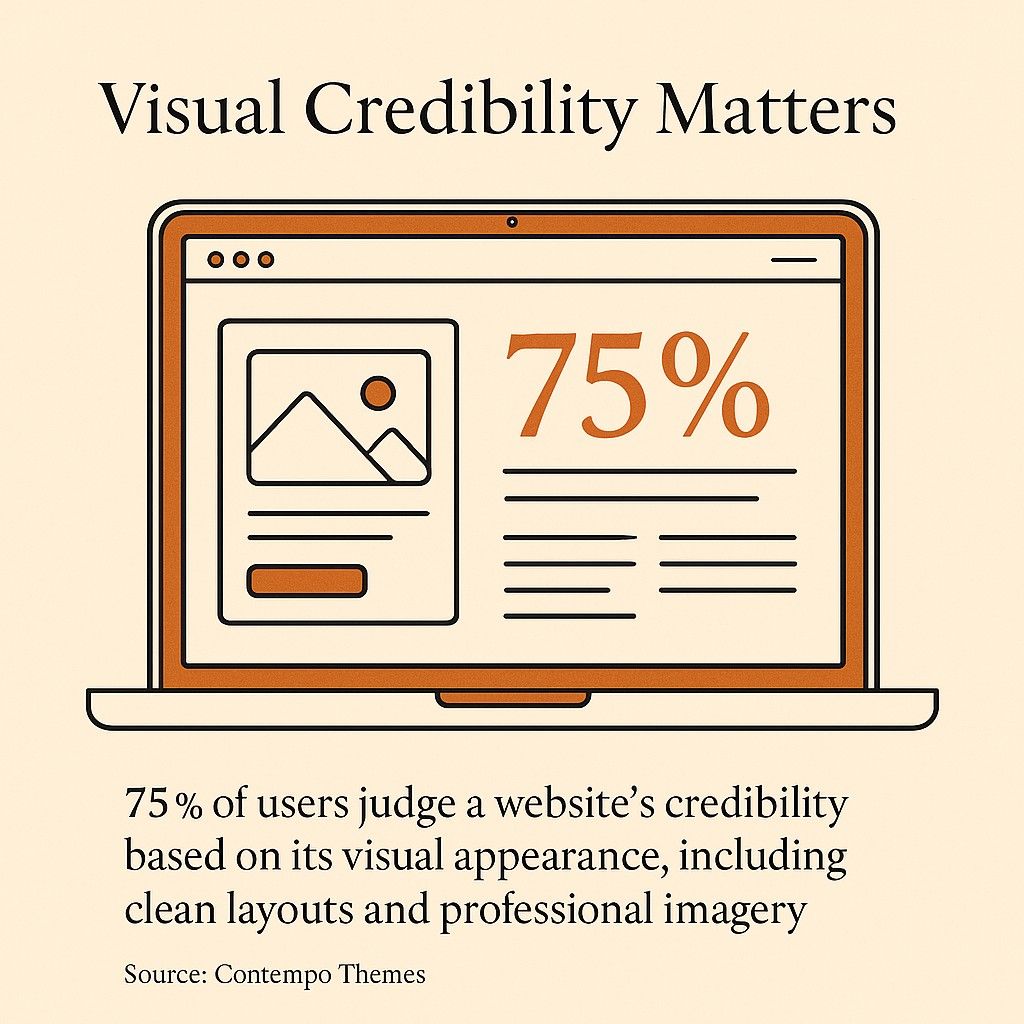
Key Design Elements That Drive Real Estate Conversions
Let's talk about what actually makes visitors take action on your site.
Modern real estate web design isn't about flashy animations or complex navigation. Web design in 2025 emphasizes minimalism, accessibility, and seamless navigation, which directly impacts user trust and conversion rates.
2025 web design: minimalism, accessibility, and seamless navigation—core drivers of trust and conversions.
Visual Hierarchy and Clean Layouts
Your homepage needs to answer three questions within five seconds. Who are you? What properties do you offer? How can visitors contact you?
Use whitespace strategically to guide eyes toward your most important elements. Property listings should breathe. Contact forms need prominence without being pushy.
Navigation should be dead simple. Buyers and sellers don't want to hunt for information. Main menu items should include properties, about, services, and contact. That's it.
Professional Imagery and Visual Content
Property photos make or break your conversion rates. Blurry smartphone shots tell visitors you don't care about quality.
High-quality visuals like immersive virtual tours and videos engage visitors and showcase properties in their best light, especially in luxury real estate markets.
Immersive tours and video boost engagement and present properties in their best light.
Include multiple photo formats: standard gallery images, 360-degree virtual tours, and neighborhood videos. Each serves a different stage of the buyer journey.
Brand consistency matters too. Your logo, color scheme, and typography should appear identical across every page. Inconsistent branding screams "unprofessional."
Mobile Responsive Design That Actually Works
More than half your visitors will view your site on their phones. If your mobile experience is clunky, they'll leave.
Test your site on actual devices. Buttons need to be thumb-friendly. Text should be readable without zooming. Property images must load quickly even on slower connections.
Mobile responsive design means your layout adapts intelligently. Contact buttons should stick to the bottom of the screen. Property search filters need to collapse neatly. Everything should feel natural for touchscreen interaction.
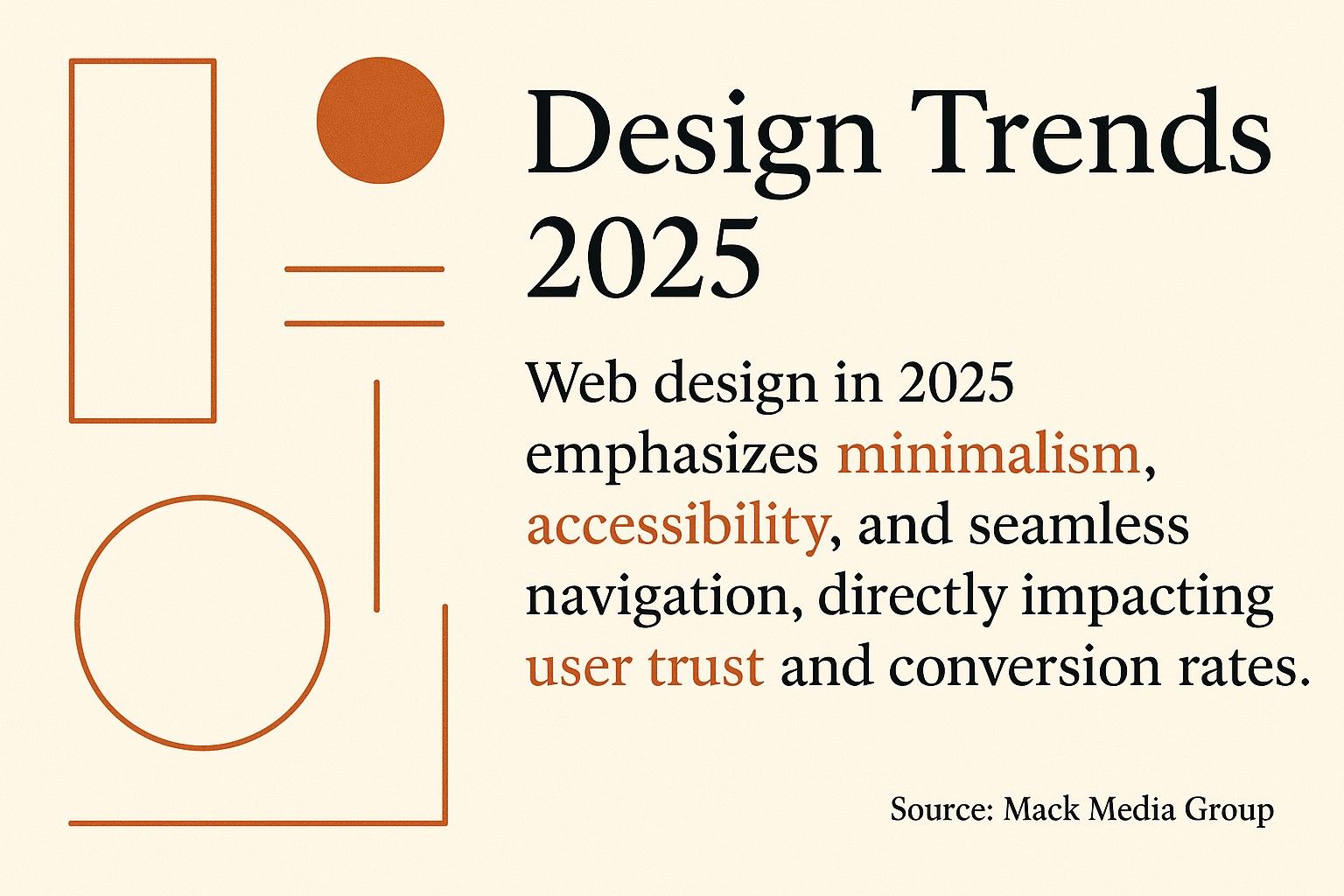
Template-Based vs Custom Real Estate Website Solutions
Now that you understand core design principles, you need to choose your approach.
The template versus custom debate comes down to budget, timeline, and how much control you need over every detail.
DIY Website Builders and Template Platforms
DIY website builders like Wix and Squarespace offer a wide selection of real estate templates with drag-and-drop editors and essential features such as multimedia galleries and interactive maps.
These platforms work well if you're starting out or operating on a tight budget. You can launch a decent-looking real estate website in a few days.
Popular real estate website builder options include:
- Wix offers 500+ templates with easy customization
- Squarespace provides clean, modern designs with built-in SEO tools
- WordPress with real estate themes gives more flexibility but requires more technical knowledge
- Purpose-built real estate platforms like Placester include IDX integration from the start
DIY builders compared: Wix, Squarespace, WordPress themes, and purpose-built platforms offer real estate templates with drag-and-drop simplicity.
The tradeoff? Limited customization options. You're working within the platform's constraints. Your site might look similar to competitors using the same template.
Custom Design Services and Professional Development
Custom design means your website is built from scratch to match your exact specifications. Every pixel serves your brand and business goals.
This approach makes sense when you're established, have specific functionality needs, or want to stand out completely from local competition. Your site becomes a unique asset that competitors can't replicate.
We work with real estate professionals who need custom solutions through Webflow development. This gives you template-like editing ease with custom design flexibility.
Custom websites typically include:
- Unique layouts designed around your target buyer personas
- Custom property showcase features beyond standard listings
- Branded design elements that reinforce your market position
- Integration with your specific CRM and marketing tools
- Advanced SEO optimization built into the site structure
Cost Considerations and Budget Planning
Cost considerations vary significantly. Free website builders offer basic functionality while premium solutions or custom designs provide advanced features and full control over IDX integration.
Free Builder
- Typical Investment: $0-50/month
- Best For: Brand new agents testing the market
Premium Template
- Typical Investment: $100-300/month
- Best For: Individual agents with established business
Semi-Custom
- Typical Investment: $2,000-5,000
- Best For: Teams needing specific features
Full Custom Design
- Typical Investment: $5,000-15,000+
- Best For: Brokerages and luxury specialists
Budget for ongoing costs too. Hosting, domain renewal, MLS integration fees, and maintenance add up. Factor in $50-200 monthly for these essentials.
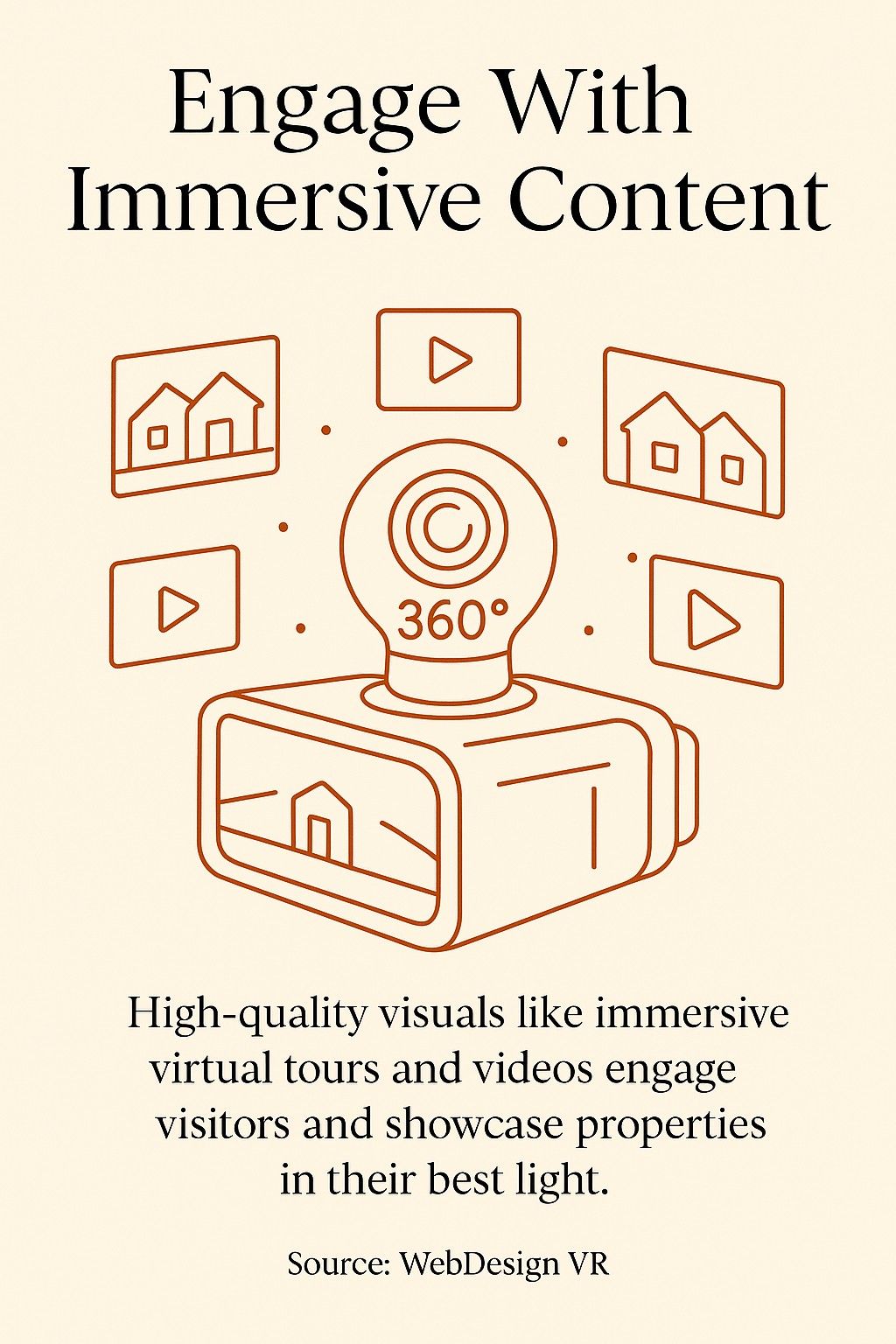
IDX and MLS Integration for Property Listings
With your design approach decided, let's tackle the technical backbone of any real estate website.
IDX integration is non-negotiable if you want to display current listings from your MLS on your website.
Understanding IDX Technology
IDX stands for Internet Data Exchange. It's the system that lets you display MLS listings on your site.
Without IDX, you'd need to manually update every listing. New properties, price changes, sold status – all of it would require constant attention. IDX automates this entire process by syncing directly with your MLS database.
Think of IDX as a bridge. It connects the massive MLS database to your website, pulling in listing data automatically and keeping everything current.
Essential IDX Features for Real Estate Websites
Not all IDX solutions are created equal. You need specific functionality to serve both buyers and your business goals.
Key IDX features to prioritize:
- Advanced search filters by price, location, bedrooms, and property type
- Interactive map-based property search
- Saved search functionality so visitors can create accounts and save criteria
- Email alerts when new properties match saved searches
- Detailed property listing pages with photo galleries and key details
- Lead capture forms integrated into the search experience
The search experience needs to be intuitive. Buyers should find what they want in three clicks or less. Complicated search interfaces drive people to competitor sites.
MLS Data Feeds and Real-Time Updates
Your IDX feed should update throughout the day, not once weekly. Real estate moves fast. Stale listings damage your credibility.
Most quality IDX providers offer updates every 15-60 minutes. This ensures price changes and new listings appear quickly on your site.
Verify your IDX solution includes: accurate square footage data, correct listing photos, complete property descriptions, and reliable status updates. Missing or incorrect information frustrates buyers and reflects poorly on you.
Lead Generation Tools and Capture Systems
IDX brings visitors to your site, but lead capture systems convert them into contacts you can work with.
Lead capture tools such as forms, pop-ups, and clear calls-to-action are critical for converting visitors into qualified clients.
Strategic Contact Form Placement
Contact forms should appear where decision-making happens. Property listing pages, neighborhood guides, and home valuation tools all need capture points.
Place forms where decisions happen—on listings, neighborhood pages, and valuation tools—to boost conversions.
Keep forms short early in the buyer journey. Name and email get you in the game. Save detailed questions for later nurture sequences.
Test different form placements:
- End of blog posts about local market conditions
- Within property listing pages after photo galleries
- On your homepage above the fold
- Dedicated contact page with multiple contact options
Each form location serves different visitor intent levels. Homepage forms catch high-intent visitors ready to talk. Blog post forms capture people still researching.
Pop-ups and Timed Offers That Convert
Pop-ups work when they offer real value at the right moment. Timing and relevance determine success.
Exit-intent pop-ups catch visitors about to leave. Offer something valuable: a neighborhood guide, market report, or home valuation tool. This gives them a reason to share their contact information.
Timed pop-ups should wait until someone's been on your site for at least 30 seconds. Immediate pop-ups feel aggressive and hurt user experience.
Always include an easy close button. Forcing engagement creates negative associations with your brand.
Property Alerts and Saved Search Lead Magnets
Saved search functionality doubles as a lead generation tool. Buyers create accounts to save their criteria, giving you their contact information.
Email alerts keep you top-of-mind. When a property matching their criteria hits the market, they receive an automatic notification. Your name and brand appear in their inbox regularly.
This positions you as their property finder, not just another agent. You're providing ongoing value before they're ready to commit to working with someone.
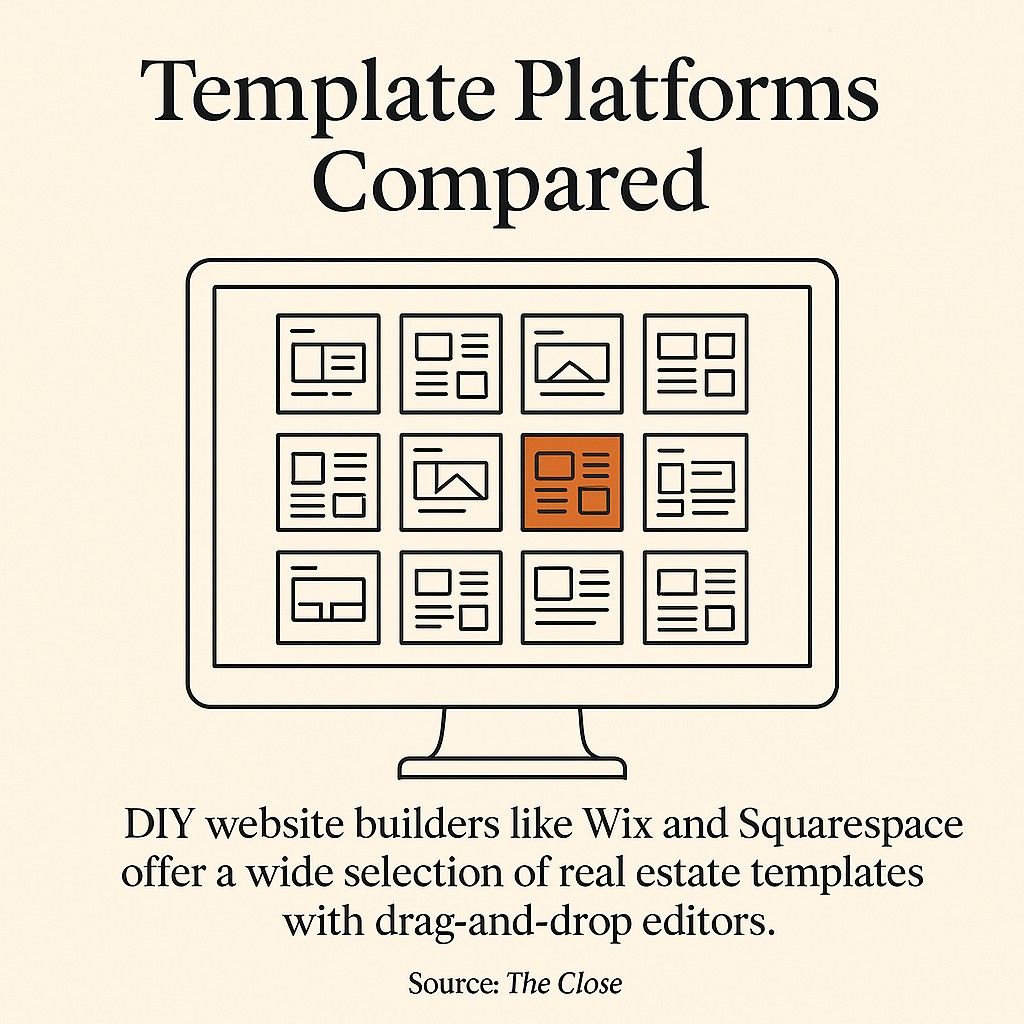
SEO and Search Engine Visibility for Real Estate Sites
Lead capture systems only work if people find your site first. SEO drives the organic traffic that feeds your conversion funnel.
Real estate SEO focuses on local visibility and specific property-related searches.
Local SEO and Geographic Targeting
Your target buyers search for neighborhoods, school districts, and specific streets. Your content needs to match these searches.
Create dedicated pages for each neighborhood you serve. Include local market data, school information, popular amenities, and recent sales activity. This content ranks for location-specific searches.
Optimize your Google Business Profile completely. Categories, service areas, photos, and regular posts all improve local search visibility. Encourage satisfied clients to leave reviews.
Local link building matters too. Partner with local businesses, sponsor community events, and get featured in local news. These create backlinks that boost your domain authority.
On-Page SEO for Property Listings
Each property listing page is an SEO opportunity. Optimize titles, descriptions, and image alt text with relevant keywords.
Property page titles should follow this pattern: "3 Bedroom Colonial in [Neighborhood] | [Your Name/Company]"
Write unique property descriptions instead of copying MLS text verbatim. Include neighborhood context, nearby amenities, and lifestyle benefits. This gives search engines more content to index.
Image optimization matters for page speed and image search visibility. Compress photos before uploading. Use descriptive file names like "123-main-street-kitchen.jpg" instead of "IMG_2847.jpg".
Content Marketing and Blog Strategy
Regular blog content establishes expertise and captures search traffic for informational queries.
Write about topics your target clients actually search for:
- Neighborhood guides and local market updates
- Home buying and selling process articles
- Mortgage and financing education
- Home maintenance and renovation tips
- Local events and community news
Aim for one to two quality blog posts monthly. Consistency matters more than frequency. Search engines reward sites that publish regularly over time.
Internal linking between blog posts and listing pages strengthens your site structure. This helps search engines understand your content relationships and improves overall rankings.
Advanced Features for Agent, Team, and Brokerage Sites
Once you've nailed the fundamentals, these advanced features separate basic sites from lead-generating machines.
Your needs change based on whether you're a solo agent, team, or full brokerage. Scale your features accordingly.
Agent and Team Profile Systems
Individual agent pages build trust and help with search visibility. Each agent gets their own biography, photo, contact information, and listing portfolio.
Team structures need hierarchy displays. Show team leaders, specialists, and support staff clearly. Visitors should understand who handles what.
Include professional headshots, not casual snapshots. Bios should highlight local expertise, certifications, and what makes each agent unique in your market.
Interactive Neighborhood and Community Guides
Detailed neighborhood pages do triple duty. They attract search traffic, educate buyers, and demonstrate local expertise.
Build pages that include:
- Neighborhood overview and history
- Current market statistics and recent sales
- School ratings and district information
- Parks, restaurants, and local amenities
- Transportation and commute details
- Embedded maps showing boundaries and features
Interactive maps let visitors explore visually. Mark schools, parks, shopping, and recent listings. This keeps people engaged longer and positions you as the neighborhood expert.
Client Testimonials and Social Proof
Reviews build credibility with skeptical visitors. Feature client testimonials prominently throughout your site.
Video testimonials outperform text. Ask satisfied clients to record short clips about their experience. These feel authentic and create emotional connections.
Display recent closed transactions with addresses, sale prices, and how quickly properties sold. This demonstrates current market activity and your effectiveness.
3D Property Visualization and Immersive Experiences
Standard photo galleries don't cut it for high-end properties or new developments. Buyers want to experience spaces virtually before scheduling tours.
Our AmplyViewer solution creates interactive online showcases for real estate projects. It provides more of an experience than just photos and text through 3D visualization of property plans.
This immersive approach lets potential buyers explore floor plans, navigate through spaces, and understand property potential before ever visiting. It's particularly powerful for pre-construction properties where physical tours aren't possible.
Virtual tours reduce unqualified showings. Buyers who request in-person tours after experiencing properties virtually are more serious and better-informed.
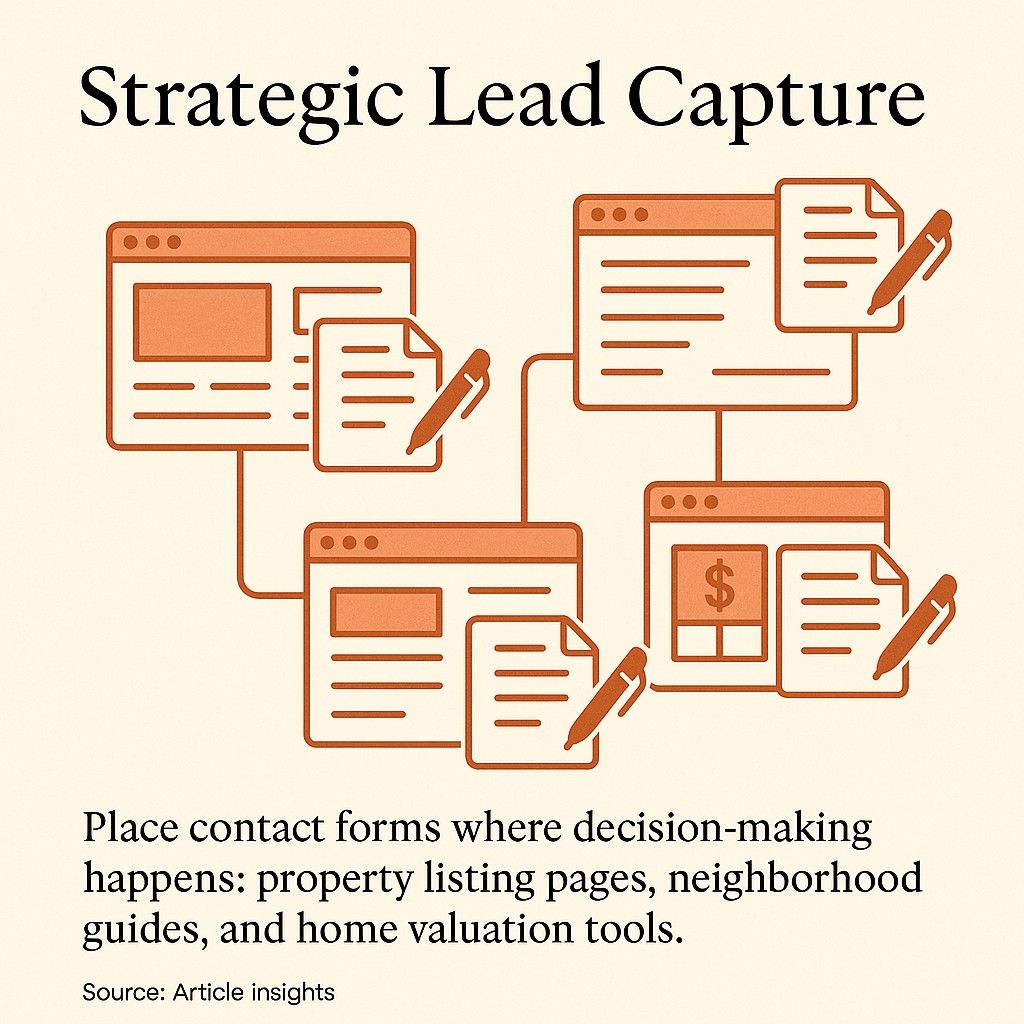
Website Performance and Technical Optimization
Design and features mean nothing if your site loads slowly or breaks on certain devices.
Technical performance directly impacts both user experience and search rankings. Fast sites convert better and rank higher.
Page Speed and Load Time Optimization
Every second of load time costs you conversions. Visitors abandon slow sites before listings even appear.
Target a page load time under three seconds. Test your current speed using tools like Google PageSpeed Insights or GTmetrix. These identify specific issues slowing you down.
Common speed fixes:
- Compress images before uploading (aim for under 200KB per image)
- Enable browser caching so repeat visitors load faster
- Minimize CSS and JavaScript files
- Use a content delivery network for faster asset loading
- Choose quality hosting with good server response times
Property sites struggle with speed because of image-heavy listings. Balance visual quality with file size. Modern compression tools maintain appearance while drastically reducing file weight.
Check out our detailed guide on real estate website speed optimization for specific tactics that improve load times without sacrificing visual quality.
Security and Trust Signals
Buyers submit personal information through your contact forms. They need assurance their data stays secure.
SSL certificates (HTTPS) are mandatory. These encrypt data between browsers and your server. Sites without HTTPS display "Not Secure" warnings that destroy trust instantly.
Display trust badges near forms. Security seals, association memberships, and certification logos reassure visitors you're legitimate and professional.
Update your website platform and plugins regularly. Outdated software creates security vulnerabilities that hackers exploit. Monthly updates should be standard practice.
Analytics and Conversion Tracking
You can't improve what you don't measure. Implement tracking to understand visitor behavior and identify improvement opportunities.
Install Google Analytics to monitor traffic sources, popular pages, and user flow through your site. This data reveals which marketing channels drive visitors and where people drop off.
Track specific conversion goals: contact form submissions, saved searches, property inquiry calls, and email signups. Understanding conversion rates for each action helps prioritize optimization efforts.
Heatmap tools like Hotjar show where visitors click, how far they scroll, and where they get stuck. This visual data pinpoints design problems that analytics numbers miss.
Choosing Your Real Estate Website Approach
You've seen what works and what's possible. Now you need to match solutions to your specific situation.
Your budget, technical comfort level, and business goals determine the right path forward.
Decision Framework for Real Estate Professionals
Start by asking yourself these questions:
What's your current monthly marketing budget? Be realistic about what you can invest in your website and maintain long-term.
How tech-savvy are you? Template builders require some learning. Custom solutions with ongoing support might make more sense if you'd rather focus on clients than website management.
What's your lead volume goal? Higher lead targets justify bigger website investments because the return scales with your business.
How established is your brand? New agents benefit from template speed and lower cost. Established professionals often need custom solutions to maintain brand positioning.
New Agent (0-2 years)
- Recommended Approach: Template builder platform
- Priority Features: IDX search, mobile design, contact forms
Established Agent (3-7 years)
- Recommended Approach: Premium template or semi-custom
- Priority Features: Lead capture tools, SEO optimization, blog
Team or Specialty Practice
- Recommended Approach: Custom design solution
- Priority Features: Team profiles, advanced IDX, unique branding
Brokerage
- Recommended Approach: Full custom platform
- Priority Features: Agent management, multiple IDX feeds, custom tools
Working With Web Design Partners
If you're going custom or semi-custom, choosing the right development partner matters enormously.
Look for designers who specialize in real estate websites. Generic web designers don't understand IDX integration, MLS requirements, or real estate user behavior. You'll waste time explaining industry basics.
Ask potential partners about their process. Quality designers start with strategy before touching design tools. They ask about your target clients, competitive positioning, and business goals.
Review their real estate portfolio carefully. Do their sites load fast? Are they mobile responsive? Do they showcase properties effectively?
We approach every real estate project through collaboration. Understanding your market, target buyers, and business model shapes every design decision. Our specialized real estate web design process ensures your site serves both your brand and your business goals.
Implementation Timeline and Launch Planning
Set realistic expectations for timing. Template sites can launch in days. Custom solutions take weeks or months.
Typical timelines:
- DIY template builder: 3-7 days for basic setup
- Premium template with customization: 2-3 weeks
- Semi-custom design: 4-8 weeks
- Full custom development: 8-16 weeks
Plan your content preparation time too. You need professional photos, property descriptions, bio content, and neighborhood information ready. Gathering these materials often takes longer than actual site building.
Launch in phases if needed. Start with core pages and basic IDX functionality. Add advanced features, blog content, and neighborhood guides incrementally. A good basic site beats a delayed perfect one.
Quick Answers to Common Questions
How much does it cost to design a real estate website?
Professional real estate website design typically ranges from $2,000 to $10,000, depending on features and customization level. Template-based sites cost less while custom solutions with advanced integrations run higher. Monthly hosting and MLS integration fees add $50-200 to ongoing costs.
What's the difference between IDX and MLS integration?
IDX is the technology that displays MLS listings on your website. It automatically syncs property data from the MLS database to your site. The MLS is the actual listing database maintained by your local real estate board. IDX acts as the bridge between them.
Can I build a real estate website myself?
Yes, platforms like Wix, Squarespace, and WordPress with real estate themes let you build sites yourself. You'll need some technical comfort and time to learn the platform. DIY sites work well for new agents with limited budgets who need to launch quickly.
Building Your Lead Generation Machine
Your real estate website needs to earn its keep. Pretty design without lead generation is just digital art.
Focus on these conversion essentials first: clean mobile-friendly design, reliable IDX integration, strategic lead capture points, and fast load times. Get these right before worrying about advanced features.
Start where you are. New agents can build effective lead-generating sites with template builders. Established professionals should invest in custom solutions that match their brand positioning and business scale.
The real estate professionals who win online treat their website as core business infrastructure, not an afterthought. They update content regularly, monitor performance metrics, and continuously optimize based on visitor behavior.
Your competitors are investing in better websites right now. The question isn't whether your site matters. It's whether you'll build one that converts before they do.
Ready to create a real estate web page that actually generates qualified leads? We'd love to show you what's possible with strategic design and Webflow development. Check out our real estate website user experience insights or explore why custom real estate websites outperform template solutions.

